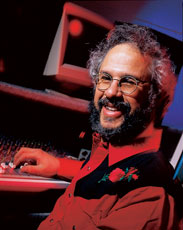|
|
Back to Basics |
November 2000 |
|
In any endeavor - even in our personal lives - there's no substitute for a firm grasp on the fundamentals. Often, the longer one is involved in an art, craft, sport, or business, the easier it is to take the basics for granted - and get sloppy.
Superior musicians understand this and periodically go back to basics in their practice routines. This could mean practicing arpeggios and scales, working on hand position, checking posture, playing etudes and instrument-specific exercises, and reviewing simple tunes that allow you to focus on technique and basic musicianship. Smart bands employ a similar approach during rehearsal, breaking down arrangements, going over each part slowly, with ears tuned to each note and nuance. If you fail to periodically return to fundamentals, you run the risk of developing bad habits and delivering a second-rate product.
It's instructive to watch great athletes go through their warm-up routines. They work slowly at first, releasing tension and ensuring that every move is smooth and properly stretches their bodies. If they do it wrong, they could fall short of their high performance standards, and even be injured.
Most instrumentalists and vocalists are athletes of a sort. We rely on mental sharpness and physical coordination to create art. Therefore, we should develop fundamentally sound technique through good practice routines, slow and precise rehearsal, with plenty of repetition and careful attention to smooth, correct, relaxed movement.
In some ways, the principles are similar for the producer and engineer, though the process may be more mental than physical. In the excitement of production, we sometimes fail to consider basic facts about how our gear works. Even fundamental principles of audio can fade from the mind if we don't review them.
That's why our cover story on mixer topography and signal flow (see "Mixed Signals," p. 62) is important reading for veteran personal-studio owners and less experienced musicians. Being fundamentally sound in the studio includes periodically reviewing your studio's signal flow, to make sure you use your board - the heart of most studios - to its best advantage.
Even author Barry Cleveland, with his extensive studio experience, learned new tricks when researching this story. Cleveland takes you through the ins and outs of recording consoles slowly, smoothly, and in a relaxed fashion to ensure you get it right. It's like a simple etude to build good recording technique.
Similarly, our "Square One" column this month (p. 108) sets the record straight regarding phase and polarity. Many experienced recording musicians don't have a clear understanding of these fundamental aspects of audio. Do you have them straight? Better read the story and make sure.
When you finish your review of the basics, read "Final Mix" (p. 226), in which Larry the O tackles another fundamental issue: the role of fine art in a deadline-driven production environment. When the pressure is on, how do you make deadline and still allow time for creativity? You could zip through that column, but if creativity under pressure is an issue for you, read it carefully. It's a mental etude for those who produce not only music but other goods and services - including magazines. |
